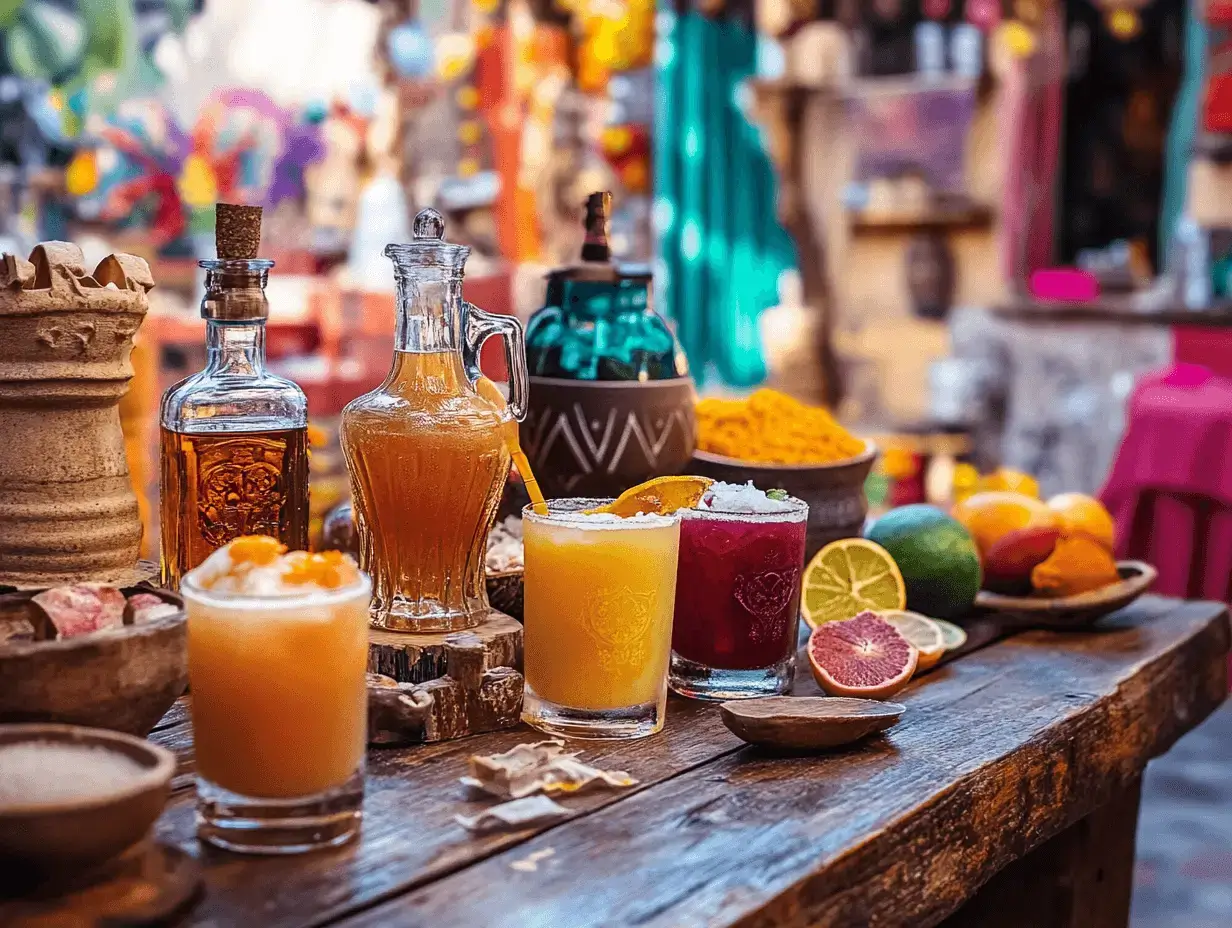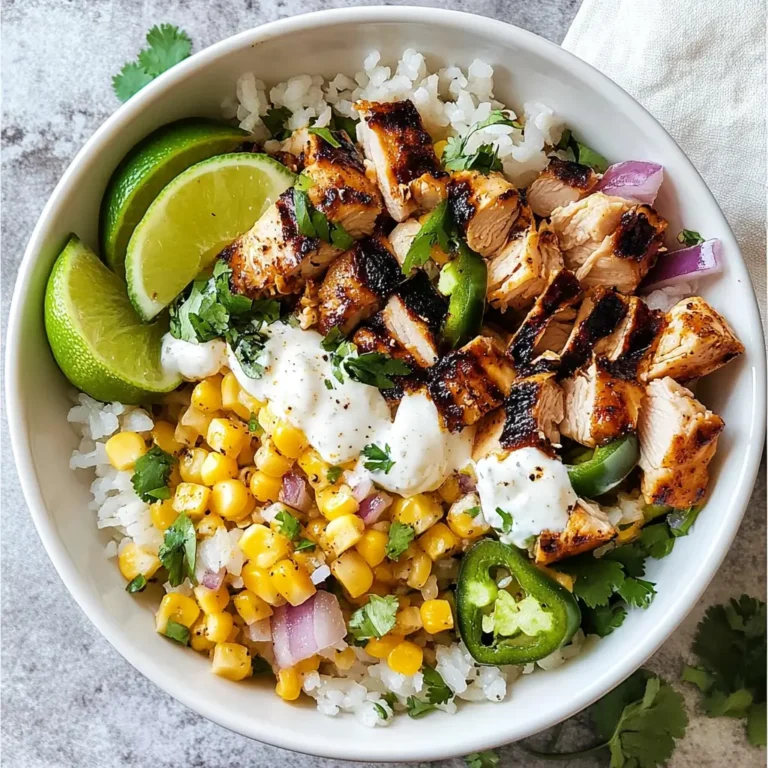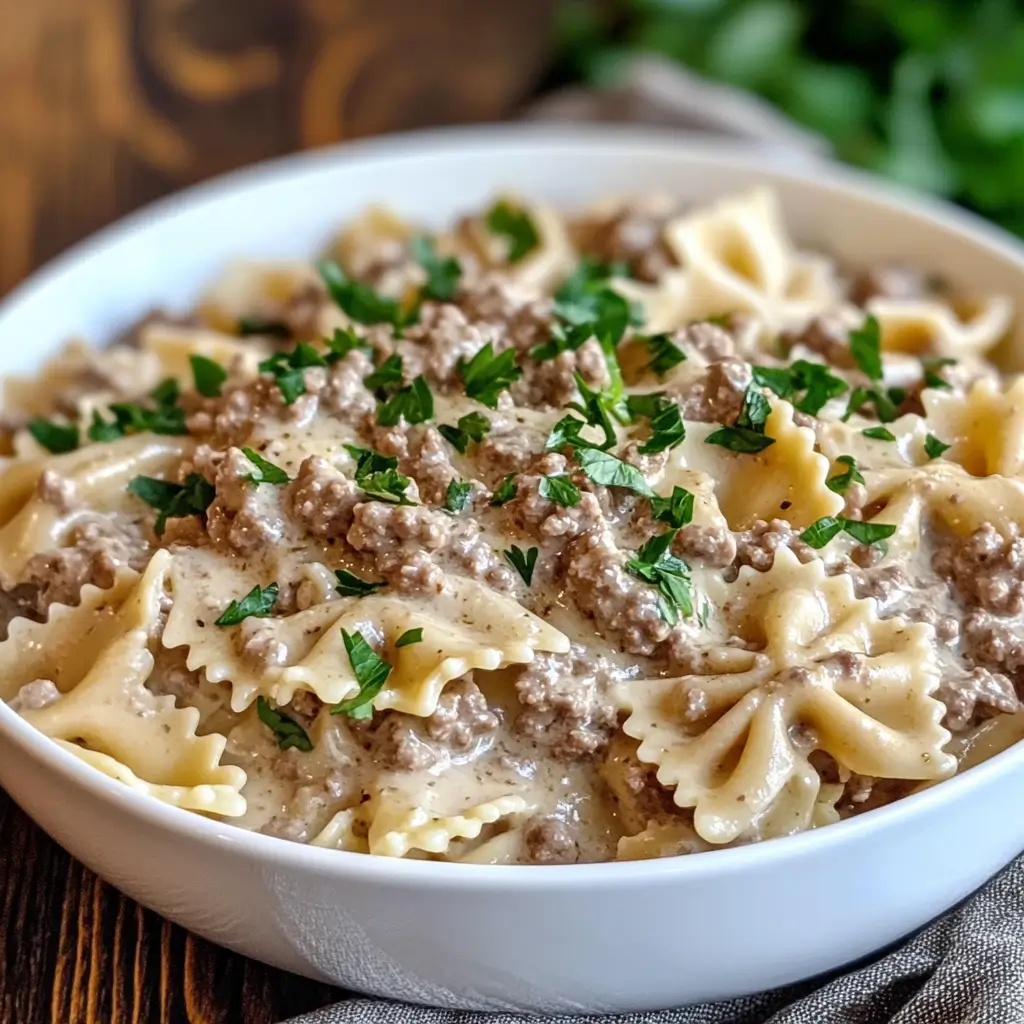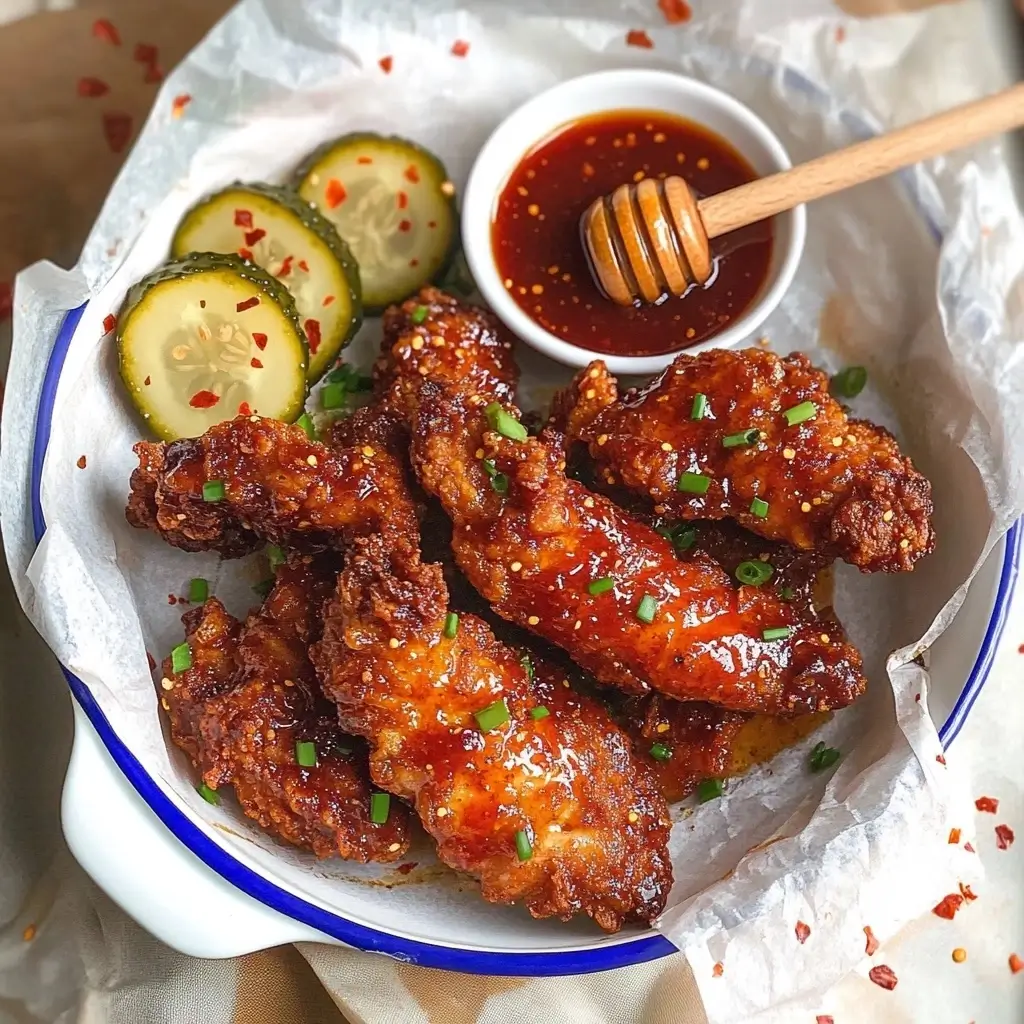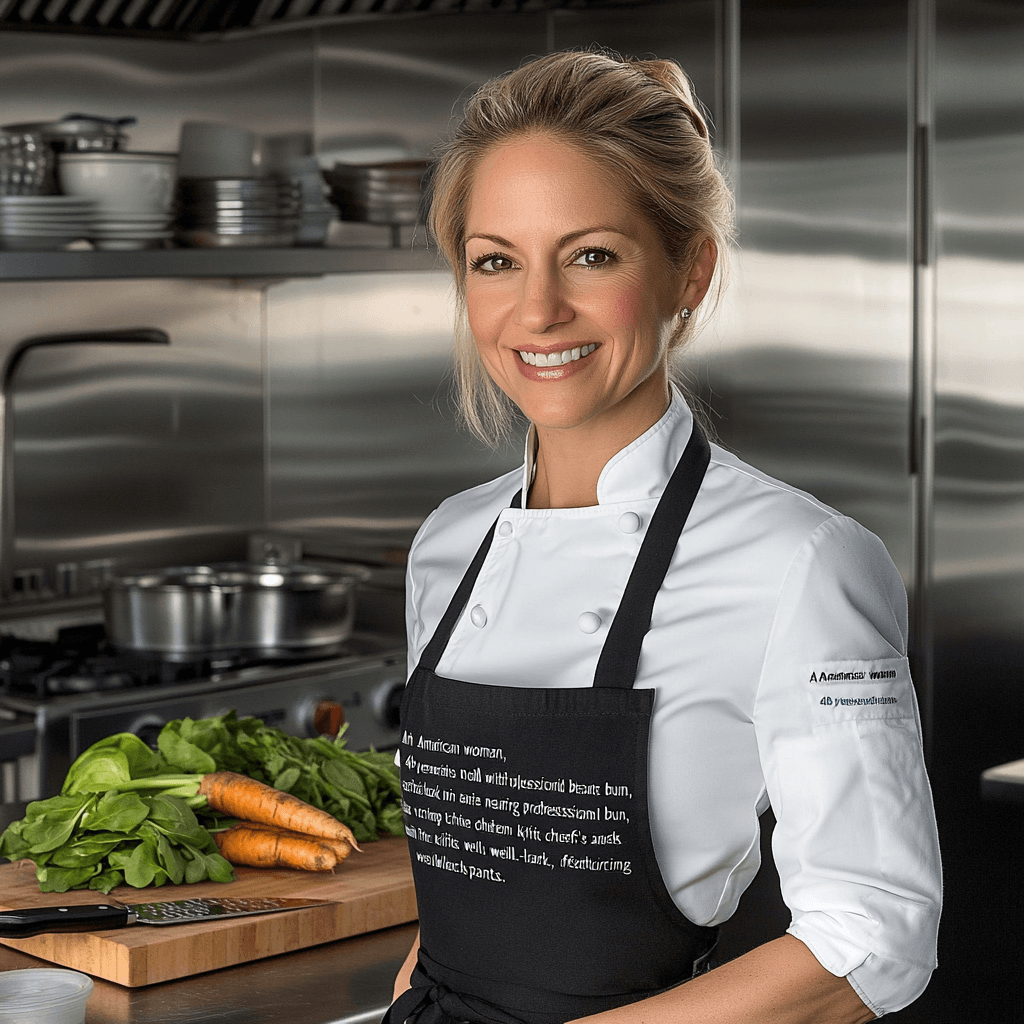Table of Contents
Mexican drinks are a vibrant reflection of the country’s rich culture and traditions. From refreshing aguas frescas to the bold flavors of tequila and mezcal, these beverages offer something for every taste. Many of Mexico’s drinks have deep roots in Aztec and Mayan history, blending indigenous ingredients with Spanish influences. Whether you’re sipping a classic Margarita, enjoying a warm Champurrado, or trying the ancient fermented Pulque, each drink tells a story. In this guide, we’ll explore the best traditional, alcoholic, and non-alcoholic Mexican drinks, along with unique regional specialties that showcase the true essence of Mexico’s diverse beverage culture.
Traditional Mexican Drinks
Mexican cuisine is known for its bold flavors, and its traditional drinks are no exception. Many of these beverages have been consumed for centuries, offering a taste of Mexico’s past and present.
Aguas Frescas: Refreshing Fruit Drinks
Aguas frescas, meaning “fresh waters,” are light, naturally flavored beverages made by blending fresh fruits, cereals, or flowers with water and a touch of sugar. They are commonly found in street markets, restaurants, and homes across Mexico.
Some of the most popular aguas frescas include:
- Agua de Jamaica – A tangy, ruby-red hibiscus flower tea.
- Agua de Tamarindo – Made from tamarind pods, offering a sweet and sour taste.
- Agua de Horchata – A creamy, cinnamon-infused rice-based drink.
- Agua de Sandía – A refreshing watermelon drink, perfect for hot weather.
These drinks are not only delicious but also a healthier alternative to sugary sodas, providing hydration and natural flavors.
Horchata: The Sweet Rice-Based Drink
Horchata is one of Mexico’s most beloved traditional drinks. Made by soaking rice, cinnamon, and sometimes almonds or vanilla in water, horchata is then blended and strained to create a smooth, milky beverage. It’s often served over ice, making it a perfect refreshment on a hot day.
This drink has Spanish origins, but the Mexican version has evolved to include local ingredients and variations. It pairs wonderfully with spicy foods, as its sweetness helps balance heat.
Tepache: Fermented Pineapple Delight
Tepache is a lightly fermented beverage made from pineapple rinds, brown sugar (piloncillo), and cinnamon. This mildly alcoholic drink is a favorite in many Mexican households and street markets.
Tepache is often served chilled with ice and has a slightly tangy, sweet flavor. While it’s traditionally low in alcohol, some people mix it with beer for an extra kick.
Mexican Alcoholic Beverages
Mexico is world-famous for its alcoholic beverages, many of which have been crafted for centuries using traditional methods. From the internationally beloved tequila to the ancient, sacred drink pulque, Mexican alcoholic drinks offer a unique combination of history, culture, and bold flavors.
Tequila: The National Spirit of Mexico
Tequila is undoubtedly Mexico’s most famous alcoholic beverage. Made from the blue agave plant, this distilled spirit originates from the state of Jalisco and surrounding regions. Tequila has deep cultural significance and is often enjoyed during celebrations, gatherings, and even traditional rituals.
Types of Tequila
There are five main types of tequila, each varying in aging and flavor profile:
- Blanco (Silver) – Unaged, clear tequila with a fresh, agave-forward taste.
- Reposado – Aged for 2-12 months in oak barrels, giving it a smoother, slightly woody flavor.
- Añejo – Aged for 1-3 years, offering a rich, caramel-like taste with hints of vanilla.
- Extra Añejo – Aged for more than three years, creating a deep, complex flavor similar to whiskey.
- Joven (Gold) – A mix of blanco and aged tequilas, often used in cocktails.
How Tequila is Enjoyed in Mexico
Unlike in many other countries where tequila is taken as a quick shot with salt and lime, in Mexico, it’s commonly sipped slowly to appreciate its flavors. It is also used in classic cocktails such as the Margarita and the Paloma.
Mezcal: The Smoky Alternative
While tequila is well known globally, mezcal is gaining popularity for its smoky, complex taste. Mezcal can be made from various types of agave (unlike tequila, which is only from blue agave) and is traditionally cooked in underground pits lined with wood and volcanic stones. This method gives mezcal its signature smoky flavor.
Tequila vs. Mezcal: What’s the Difference?
- Tequila is produced only from blue agave, whereas mezcal can be crafted from more than 30 different types of agave.
- Tequila is produced using industrialized methods, while mezcal follows traditional artisanal techniques.
- Mezcal has a distinct smoky flavor, while tequila is smoother and more refined.
Mezcal is often enjoyed neat, accompanied by orange slices and sal de gusano (worm salt), enhancing its earthy and rich profile.
Pulque: An Ancient Fermented Drink
Pulque is one of Mexico’s oldest alcoholic beverages, dating back to pre-Hispanic times. Made from the fermented sap of the maguey plant (a type of agave), pulque has a slightly thick consistency and a tangy, sour taste.
This drink was once considered sacred by the Aztecs and was reserved for priests, warriors, and the elderly. Today, pulque is making a comeback, with specialized pulquerías (pulque bars) serving it in both its traditional form and in modern flavored variations, such as strawberry, guava, or coconut.
Popular Cocktails in Mexico

Mexico is home to some of the world’s most famous cocktails, combining traditional flavors with refreshing and bold ingredients. Whether you prefer tequila-based drinks or a unique beer cocktail, Mexican mixology offers a variety of options to suit every taste.
Margarita: The World-Famous Cocktail
The Margarita is arguably the most well-known Mexican cocktail, enjoyed both in Mexico and internationally. It’s a simple yet delicious mix of tequila, lime juice, and orange liqueur (such as triple sec or Cointreau), served in a salt-rimmed glass.
How to Make a Classic Margarita
Ingredients:
- 2 oz tequila (preferably blanco or reposado)
- 1 oz freshly squeezed lime juice
- 1 oz triple sec or Cointreau
- Ice
- Salt for rimming the glass
Instructions:
- Moisten the rim of a glass with a lime wedge, then dip it into salt to coat the edge.
- Add tequila, lime juice, and triple sec to a shaker filled with ice.
- Combine tequila, lime juice, and triple sec in a shaker filled with ice.
- Garnish with a lime wedge and enjoy!
Variations: The Margarita has many variations, such as the Frozen Margarita, Strawberry Margarita, and Spicy Jalapeño Margarita for those who like a kick of heat.
Paloma: A Refreshing Tequila Mix
While the Margarita is the most famous, the Paloma is a favorite among Mexicans for its refreshing and slightly bitter-sweet taste. This cocktail blends tequila with grapefruit soda (such as Squirt or Jarritos), lime juice, and sometimes a touch of salt.
How to Make a Classic Paloma
Ingredients:
- 2 oz tequila
- ½ oz lime juice
- Grapefruit soda (Squirt or Jarritos)
- Ice
- Salt for rimming the glass (optional)
Instructions:
- Place ice in a glass, then pour in tequila and lime juice.
- Top with grapefruit soda and stir gently.
- Garnish with a grapefruit slice and enjoy!
Why It’s Popular: The Paloma is easy to make, incredibly refreshing, and perfect for hot weather. It’s a lighter alternative to the Margarita while still delivering the signature tequila flavor.
Michelada: The Spicy Beer Cocktail
For beer lovers, the Michelada is a must-try Mexican drink. This spicy and tangy beer cocktail is similar to a Bloody Mary but made with beer instead of vodka. It combines lime juice, tomato juice, hot sauce, Worcestershire sauce, and Mexican beer, served over ice in a salt-rimmed glass.
How to Make a Classic Michelada
Ingredients:
- 1 bottle of Mexican beer (such as Corona, Modelo, or Pacifico)
- ½ cup tomato juice (or Clamato for extra flavor)
- 1 oz lime juice
- 1 tsp hot sauce (like Valentina or Cholula)
- 1 tsp Worcestershire sauce
- Salt and chili powder for rimming the glass
- Ice
Instructions:
- Rim a glass with salt and chili powder.
- Fill the glass with ice and add lime juice, tomato juice, hot sauce, and Worcestershire sauce.
- Pour in the beer and stir gently.
- Garnish with a lime wedge and enjoy!
Variations: Some Micheladas include soy sauce, Maggi seasoning, or even clam broth, making them even more flavorful.
Non-Alcoholic Mexican Drinks
While Mexico is well known for its tequila and mezcal, it also offers a rich variety of non-alcoholic drinks. Many of these beverages have deep historical roots and are enjoyed across the country, especially during celebrations and holidays. From warm, comforting drinks like Champurrado to refreshing coffee-infused Café de Olla, these non-alcoholic options showcase Mexico’s unique culinary traditions.
Champurrado: A Thick Mexican Hot Chocolate
Champurrado is a thick, rich Mexican hot chocolate made with masa harina (corn dough), piloncillo (unrefined cane sugar), cinnamon, and Mexican chocolate. It has a slightly grainy texture and is often served for breakfast or alongside tamales during holiday celebrations like Día de los Muertos (Day of the Dead) and Las Posadas.
How to Make Champurrado
Ingredients:
- 4 cups milk (or water)
- 1 cinnamon stick
- 4 oz Mexican chocolate (such as Abuelita or Ibarra)
- ¼ cup masa harina
- ¼ cup piloncillo (or brown sugar)
- 1 tsp vanilla extract
Instructions:
- In a pot, heat milk (or water) with the cinnamon stick over medium heat.
- Add the Mexican chocolate and stir until melted.
- Dissolve the masa harina in a small amount of water, then slowly pour it into the pot, stirring continuously.
- Add the piloncillo and vanilla extract, and continue stirring until the mixture thickens.
- Serve hot, garnished with cinnamon or a piece of chocolate.
Why It’s Popular: Champurrado is a comforting and filling drink, perfect for cold mornings or festive occasions.
Atolé: A Warm Corn-Based Beverage
Atolé is similar to Champurrado but without the chocolate. This pre-Hispanic drink is made with masa harina, cinnamon, vanilla, and milk or water. It has a smooth, creamy consistency and is often flavored with ingredients like strawberries, almonds, or guava.
Atolé vs. Champurrado: The key difference is that Champurrado contains chocolate, while Atolé does not. Both are thickened with corn masa and served warm.
Café de Olla: Traditional Mexican Coffee
Café de Olla is a spiced Mexican coffee traditionally prepared in a clay pot (olla de barro). This brewing method gives the coffee a distinct earthy flavor, which is enhanced with cinnamon and piloncillo.
How to Make Café de Olla
Ingredients:
- 4 cups water
- ½ cup ground coffee
- 1 cinnamon stick
- ¼ cup piloncillo or brown sugar
Instructions:
- In a pot, heat the water with cinnamon and piloncillo until the sugar dissolves.
- Add the ground coffee and let it simmer for a few minutes.
- Strain the coffee into a mug and serve hot.
Why It’s Unique: Unlike regular brewed coffee, Café de Olla has a sweet and spiced flavor, making it a comforting and aromatic drink.
Unique and Lesser-Known Mexican Drinks
Beyond the well-known beverages like tequila, margaritas, and aguas frescas, Mexico has a variety of unique and regional drinks that many people outside the country have never tried. These lesser-known beverages often have deep cultural and historical significance, offering a taste of local traditions.
Pozol: Corn and Cacao Energy Drink
Pozol is a pre-Hispanic drink from southern Mexico, particularly in Chiapas and Tabasco. It’s made from corn masa and cacao, mixed with water to create a thick, slightly gritty beverage. This drink was originally consumed by the Mayans as an energy drink, helping sustain them during long journeys.
How Pozol is Made
Pozol is prepared by fermenting corn dough, which is then blended with water and unsweetened cacao. It can be enjoyed plain or sweetened with sugar and cinnamon. Unlike traditional hot chocolate, Pozol is served cold, making it a refreshing drink in Mexico’s hot climates.
Bacanora: Sonora’s Hidden Treasure
Bacanora is a distilled alcoholic beverage from the state of Sonora, Mexico. Similar to mezcal and tequila, Bacanora is made from agave, specifically Agave Pacifica. This spirit was illegal for many years but has since gained recognition as a protected regional drink, much like tequila and mezcal.
What Makes Bacanora Unique?
- It has a smoother taste than mezcal but retains a smoky flavor.
- It’s traditionally distilled in small batches using clay ovens and copper stills.
- Unlike tequila, which is commonly mixed into cocktails, Bacanora is usually sipped neat to appreciate its complex flavors.
Tuba: Coconut Sap Drink from Jalisco
Tuba is a rare and refreshing drink made from the fermented sap of coconut palm trees. It is primarily found in Colima and Jalisco, where it has been consumed for generations. The drink is naturally sweet and slightly fizzy, often served with chopped nuts and fruits for added texture.
How Tuba is Made
- Farmers tap coconut palm trees to collect the fresh sap.
- The sap is then fermented naturally, creating a mildly alcoholic drink.
- Some versions of Tuba are mixed with apple, peanuts, or hibiscus flowers for additional flavor.
Why You Should Try It: Tuba is a refreshing, probiotic-rich drink with a slightly tangy and sweet flavor, making it a great alternative to sodas and sugary beverages.
Mexican Drinks and Food Pairings

Pairing the right drink with Mexican food enhances the overall dining experience. Whether you’re enjoying spicy tacos, savory tamales, or sweet churros, there’s a perfect Mexican beverage to complement every dish.
Drinks That Go Best with Tacos
Tacos come in many varieties, from smoky al pastor to spicy barbacoa. Choosing the right drink depends on the taco’s flavor profile:
- Tacos al Pastor (spiced pork with pineapple) – Best with a cold beer like Modelo or a refreshing agua de Jamaica.
- Carne Asada Tacos – Pair well with a Paloma, as the grapefruit’s citrusy bite balances the smoky grilled meat.
- Spicy Barbacoa Tacos – A Horchata helps cool down the heat while adding a sweet contrast.
- Seafood Tacos (Fish or Shrimp) – Complement them with a Michelada, as the beer and lime enhance the fresh flavors.
The Perfect Pairings for Spicy Foods
Mexican cuisine is famous for its bold spices, and the right drink can balance or enhance the heat:
- Champurrado or Atolé – Pair well with tamales, as their creamy texture complements the masa.
- Agua de Tamarindo – Its sweet and tangy notes cut through rich and spicy foods like enchiladas.
- Café de Olla – A great companion for churros and other Mexican pastries.
Sweet Drinks for Mexican Desserts
Mexican desserts like flan, tres leches cake, and churros pair beautifully with traditional drinks:
- Horchata – The cinnamon flavor makes it the perfect match for tres leches cake.
- Café de Olla – Complements the caramel notes of flan.
- Mexican Hot Chocolate – Ideal with churros, as the rich chocolate enhances the fried dough’s crispiness.
FAQs on Mexican Drinks
1. What is the most popular drink in Mexico?
Tequila is the most famous Mexican drink, but Aguas Frescas, Micheladas, and Café de Olla are also widely enjoyed throughout the country.
2. What’s the difference between tequila and mezcal?
Tequila is made only from blue agave, while mezcal can be made from over 30 types of agave. Mezcal also has a smokier flavor due to its traditional roasting process.
Conclusion
Mexican drinks offer a vibrant mix of flavors, history, and tradition. Whether you prefer the smoky intensity of mezcal, the sweetness of horchata, or the refreshing zing of a Paloma, there’s a Mexican drink for every occasion.
These beverages are more than just refreshments—they are a deep part of Mexico’s culture and are enjoyed in everyday life, celebrations, and traditions. Next time you savor a taco or a warm tamale, pair it with an authentic Mexican drink to experience the full richness of Mexican cuisine!

